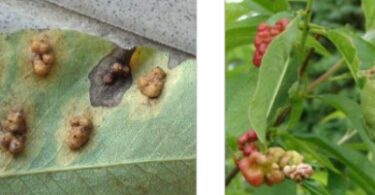Radko Tichavsky is a Czech born Mexican Agrohomeopath. He is a co-founder and director of Instituto Comenius in Mexico and author of Handbook of Agrohomeopathy, 2007 (Spanish) and Homeopathy for Plants, 2009 (Spanish), Organon de la Holohomeopatía and creator and teacher of Holohomeopathy.
He is now offering a one semester virtual course in Holohomeopathy (in English). You can learn how to define and analyze holons and how to repertorize the specific homeopathic treatment beyond just disease or pest names. You can find out more here: www.icomenius.edu.mx
NEW BOOK:
Organon de la Holohomeopatía
Six years in the making, it is the latest book by Radko Tichavsky, researcher on the application of homeopathy in agriculture. This Spanish language book covers homeopathic interventions in agriculture from the holistic view, allowing greater certainty in repertorizations. It addresses a novel concept of metabolic similarity, not only among plants, but also among different species of the animal and plant kingdom. It studies the formation and dynamics of attractors, areas of greater vitality within the holons and coexistence units of different living organisms Holohomeopathy is a fascinating contribution to the application of homeopathy to plants. It allows one to discover a universe of surprising relations in vital dynamism. It puts into the hands of the agricultural producer a valuable tool for the successful handling of pests and diseases in crops of any size. For ordering or information: [email protected]
Dear Radko,
Please could you advise me if there are any trees that would work well to grow in a new small Oak plantation – like a form of companion planting in a way. The area is SW England and the two types of native Quercus to be planted are robur and sessile.
I read that there was a synergy between Oak, Hawthorn and Ash going back to Celtic times and it made me wonder if there was a biological link here too.
Thank you in advance for your valuable advice.
Best wishes
James
Radko Tichavsky:
Dear James,
I appreciate your question and apologize in advance, as intelligent questions sometimes elicit complex answers. The coexistence of the trees is defined on the one hand by allopathy, that is to say, metabolic affinity, but on the other hand the many organisms associated with each of the trees also participate in this relationship of cooperation (to a greater or lesser extent), so we are talking about a compatibility of communities.
There are 2838 different organisms reported (among microorganisms, insects, plants, mammalian birds, etc.) that live in community with the four trees mentioned: Crataegus monogyna, Fraxinus excelsior, Quercus Robur and Quercus petraea
Fraxinus excelsior community
Crataegus monogyna community
Quercus robur community
Quercus petraea community
But only when we bring the four communities together into one can we see the relationships of the trees in their real dimension. Then man himself comes into action with his transforming capacity and much depends on what he expects from each tree (much fruit, certain taste of the fruit, much production of wood etc.). In this way the Celts not only lived eating from the forest and its fruits but also transformed the forest to their medicinal or culinary convenience. Quercus sp. played a very important role for the Celts.
( Interactions of the four communities of organisms associated with Quercus ruber, Quercus petraea, Fraxinus excelsior and Crataegus monogyna )
As for the interrelationship of the four trees, Quercus robur has relatively little allelopathic effect in relation to Fraxinus excelsior. However, when you plant a Fraxinus excelsior and a Quercus sp. either Quercus robur or Quercus petraea together, the growth of F. excelsior is superior and it develops a kind of roof or second floor over the Quercus sp. preventing its growth.
Thus after 4 years of growth of F. excelsior a good growth of nearby Quercus spp. decreases. Quercus robur also has a very good affinity with Crataegus monogyna. While F. excelsior coexists excellently with Prunus avium.
But the relation of metabolic similarity is not always symmetrical, for example many Prunus avium around a few Fraxinus excelsior decrease the trunk thickness of Fraxinus spp.. And many Fraxinus excelsior around a few Prunus avium thicken the trunks of the Prunus avium.
That is, Fraxinus excelsior benefits Prunus avium, but not vice versa. As for the combination of Crataegus monogyna and Fraxinus excelsior, this also has good results.
However, more important for optimal growth of Quercus spp. is to make sure to apply etcomycorhyzas from seed germination e.g. Glomus intraradices or Pisolithus arhizus or Suillus sp. Laccaria sp. or Cortinarius sp. for example, organisms that ensure good nutrition and better access to water, but also optimal growth.
The preference of the ancient Celts for the combination of Quercus and Fraxinus was not born because they expected better wood growth, but to produce acorns with less tannin content, naturally inhibited by calcium, an element that Fraxinus excelsior abioaccumulates in great quantity. (up to 40 000 ppm.)
The tannins may vary in Quercus sp. according to the species, but also in response to stress levels caused by the presence of heavy metals in the soil, by drought condition and by the proximity of calcium bioaccumulating plants.
Acorns with a high tannin content are not edible, so the Celts recognised as especially important the Quercus spp. that gave “sweet hazelnut-flavoured” seeds with a low tannin content. And the Quercus spp. that grew in the vicinity of the Fraxinus excelsior gave these appreciated acorns.
Hello Radko,
This past summer our spinach crop was partially infected with Spinach Downy Mildew, which I found out is due to Peronospora farinosa f.sp. spinaciae. There were yellow spots on the leaves and the underside looked gray with a bit of purple.
We’ve in Louisville Kentucky, (U.S. Zipcode 40402) and we have cold winters hot summers and moderate spring. Rainfall is average. Can you suggest how to prevent this next year?
Thank you
Kenneth
Radko Tichavsky:
Dear Kenneth,
Peronospora farinosa spinaciae is an imperfect fungus (Oomycetes). Its attacks on spinach are directly related to some nutritional aspects, mainly to excess nitrogen in the soil, but also to deficiencies of some other elements typically phosphorus and potassium. The remedies indicated are Acidum phosphoricum 6 CH, Kalium phosphoricum 6 CH, Manganum sulphuricum 3 CH and for the activation of Systemic Acquired Resistance (SAR) by application of Vitamin C 6 CH, Salicylic acid 3 CH, and Silicea terra 3 CH.
These remedies are applied preventively 4-8 times during the growing season. It’s important to know that when visible symptoms appear in the plant (yellow spots on the leaves) it is too late to make any application. In this case one should cut the affected leaves and burn them (not compost).
The main remedy is Liquidambar styraciflua or Liquidambar orientalis both applied at 6 CH potency (made from tree resin). Applications of Liquidambar should be made in early spring before sowing and before soil manipulation and again after sowing, on the soil.
Dear Radko,
My family has been growing pumpkins in Rhode Island, U.S. for the last 4 years. This year was the first time we had Squash Bugs – Anasa tristis. There were very many of them and they caused damage to both the leaves and the fruit. I don’t know if they’ll return next year, but we’d like to prepare to avoid that problem. Temperatures range from zero degrees F. in the winter to 90F in the summer. Rainfall per year averages 42 to 46 inches. We’re in Bristol County, zipcode 02806.
Thank you
Clifford
Radko Tichavsky:
Dear Clifford,
The first thing you can still do now is to remove from your soil anything that can serve as a shelter for insects during the winter (old boards etc.) In handling Anasa tristis it is very important to maintain a weekly control of the crops and know how to distinguish their development phases (eggs, larvae) since the adult insect is extremely resistant to homeopathic management.
One of the strategies that is used is to make a small first trap sowing in the first date that your climatological conditions allow. and three weeks later to make the definitive sowing. The insects will preferably attack the first sowing and leave the second one alone.
For treatments we use Azadirachta indica 3 CH, with 10 drops of Boswelia sacra TM (made from the resin), for every 20 liters of homeopathic preparation as an adjuvant, you can get Boswelia sacra resin in religious stores as incense. It is also useful to apply Pachyrhizus erosus 6 CH (TM made from seeds)
Greetings Radko,
This plant is about 1 year old. I think it’s from the jade family, but I’m not sure. It doesn’t seem to last very long as the leaves keep falling off. This is the third cutting I have planted in the planter. I water it every 10 days to 2 weeks. it is in the window with light and some partial sun. What am I doing wrong?
Thank you
Joan
Radko Tichavsky:
Hi Joan,
You can add 10 drops of vinegar to the irrigation water, and also it is important to decrease the amount of irrigation water during the winter. You can add a little bit of red brick ground into the soil to increase its drainage capacity. As a remedy for your plant you can apply once Silicea terra 30 CH and twice a month Magnesium phosphoricum 6 CH.
Hi Radko,
We had quite a lot of aphids on our peach trees and they did some minor damage. We don’t use chemicals pesticides at all, and I’m wondering what we could do to minimize the problem in the future. We have peach, apple and cherry trees. We’re in Yuba City, California, 95991. We get 22 inches of rain /year. It never snows. Temperatures range from 38f in winter to 95f in summer. Any non-toxic strategy will be greatly appreciated.
Thank you
Ilene Dalton
Radko Tichavsky:
Hello Ilene,
The aphids in Prunus persica, Malus domestica and Prunus cerazus are relatively easy to control as long as there is a good biodiversity in the green soil cover, which attracts natural enemies such as Aphidius colemani, minuscule parasitoid wasps attracted by two natural substances linalool and geraniol. Although you can buy Aphidius colemani in specialized stores, it is more beneficial to know how to attract them by means of homeopathic remedies, since this way the native species, more resistant and active, will arrive.
Aphid control is also related to ants preyed upon by spiders (Salticidae), for example Phydippus audax, a small, friendly specie that is totally harmless to humans and preys on ants. P. audax controls the ants that defend the aphids from their natural enemies. So by controlling the ants, the aphids are easily eliminated by other species such as coccidellids. (Harmonia axyridis, Cryptolaemus montrouzieri, Coccinella septempunctata, Hyppodamia convergens) among many others.
You can sow under the trees Coriandrum sativum, Ocymum basilicum, Origanumn vulgare Salvia officinalis Mentha sp. Daucus carota Cymbopogon nardus, Pelargonium graveolens mixed among the plants growing spontaneously in the soil. In addition to creating a beautiful landscape in your garden all these plants powerfully attract the cocinellids to the trees.
On the trees with aphids you can apply Boswelia sacra 6 CH (from TM elaborated from resin) and Nepeta cataria 6 CH.
Phydippus audax













